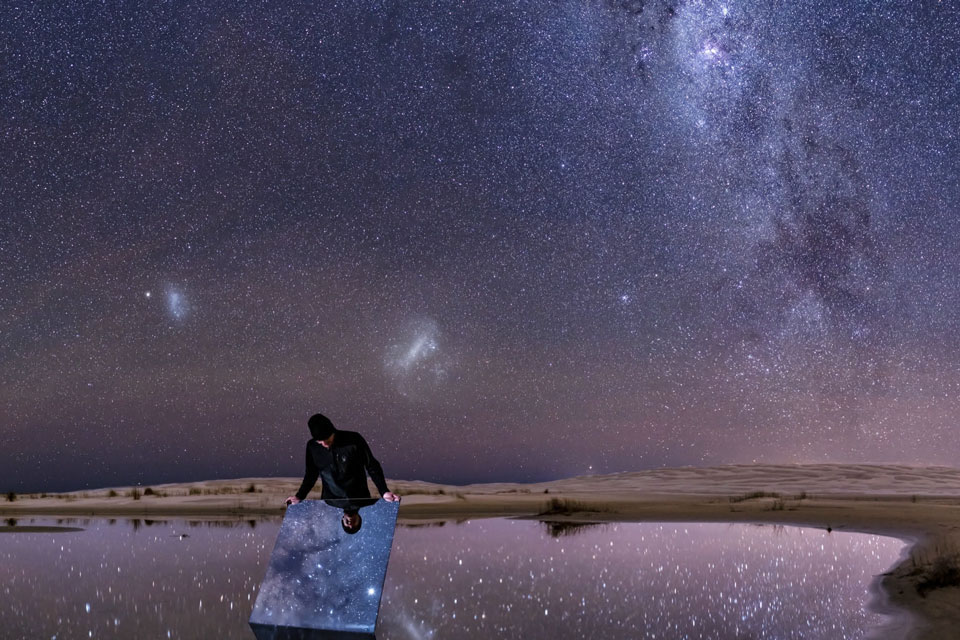[ad_1]

In Search of the Core, Mostardas, State of Rio Grande do Sul, Brazil. Astro-photographer’s statement: “The night is really a beautiful moment to enjoy all the beauties of the sky. Here the plan was to reflect as many sights as possible in the water and the mirror – with the curious human being searching them in the small square in his hands. We as humans should learn (relearn, in fact) to admire this scene in order to preserve it. Our challenge is to minimize the impact of light pollution while we grow as a civilization.” Egon Filter, Published with Permission.
Egon Filter’s celebrated photograph was NASA’s Astronomy Picture of the Day (APOD) on September 13, 2021. Titled “Night Sky Reflected,” the image is accompanied by the following caption: “What’s that in the mirror? In the featured image of the dark southern sky, the three brightest galaxies of the night are all relatively easy to identify. Starting from the left, these are the Small Magellanic Cloud (SMC), the Large Magellanic Cloud (LMC), and part of the central band of our Milky Way Galaxy. All three are also seen reflected in a shallow pool of water. But what is seen in the mirror being positioned by the playful astrophotographer? Dust clouds near the center of our Milky Way—and the planet Jupiter. The composite was carefully planned and composed from images captured from the same camera in the same location and during the same night in mid-2019 in Mostardas, south Brazil. The picture won first place in the Connecting to the Dark division of the International Dark-Sky Association’s Capture the Dark contest for 2021.”
Planet Earth is located in the Milky Way Galaxy. Our sun, the center of the solar system, is one star among hundreds of billions of stars that form the Milky Way. This giant conglomeration of suns, with 100 billion planets, cosmic dust, and gases, is our home galaxy. Within range of telescopes, the enormity of the Milky Way spins among more than 100 billion galaxies in the universe.

On clear nights, away from artificial lights, look for the Milky Way arcing over the sky. Observe tonight, November 26, at about 6 to 6:30 p.m., to find a young crescent moon close to the southwest horizon at the edge of the Milky Way. Follow the arc to the northeast horizon, where red planet Mars, -1.77 magnitude, rises in the east-northeast. Enjoy the waxing crescents as they increase in size and set later every evening.
Look near the center of Mario Motta’s photograph for a triangle marked by three outstanding stars that compose The Summer Triangle: Deneb, Vega and Altair straddle the Milky Way. Look by 9 o’clock this week to see the full pattern before its lowest star, Altair sets at about 9:30 p.m.

If the Milky Way does not appear in your sky, light pollution is blocking your view. The moon and the Summer Triangle are visible through the haze created by excessive, poorly designed outdoor lighting. In North America, 99 percent of the population lives under a light-polluted sky. To learn how to protect the night sky from light pollution, to keep the Milky Way in your sky, and to bring back the Milky Way where it is blocked from view, go to the International Dark Sky Association (IDA).
[ad_2]
